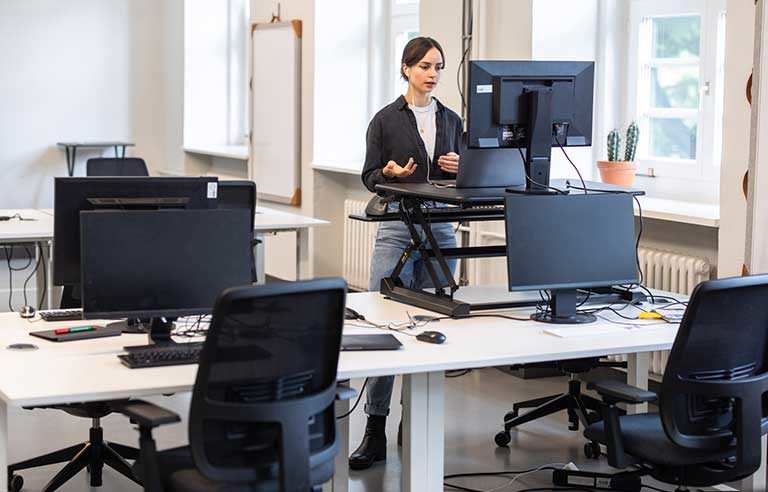
Photo: alvarez/gettyimages
College Station, TX — People who work at desks may find that switching to a standing desk from a traditional model reduces discomfort – and also boosts productivity, results of a recent study show.
Researchers from the Texas A&M University School of Public Health measured the activity levels and computer use of 61 office workers at a major university over a 10-day period. Participants were placed into three groups based on their workstation: traditional, sit-stand and “stand-biased.” The workers reported any discomfort they felt in 10 different parts of the body – from neck to feet – before the researchers developed potential solutions.
Among the workers using a traditional desk and chair, 80% experienced lower back discomfort. That compared with 52% of those using “stand-biased” desks – defined as a fixed work surface around elbow height while standing in conjunction with a drafting stool or chair with an extended cylinder.
Although the traditional workstation group transitioned significantly more from seated to standing postures, the stand-biased group exerted more energy.
Meanwhile, the stand-biased group logged a significantly higher word count than the traditional workstation group, although it also made more typos, according to a Texas A&M press release.
“The bottom line is that the risk of health issues from sedentary work can be alleviated through alternative desk options, like sit-stand or stand-biased workstations,” study co-author Kaysey Aguilar, an assistant professor at Texas A&M, said in the release. “These are win-win solutions because they benefit workers’ health while maintaining the high productivity employers expect.”
The study was published online in the journal IISE Transitions on Occupational Ergonomics and Human Factors.
McCraren Compliance offers many opportunities in safety training to help circumvent accidents. Please take a moment to visit our calendar of classes to see what we can do to help your safety measures from training to consulting.
Original article published by Safety+Health an NSC publication